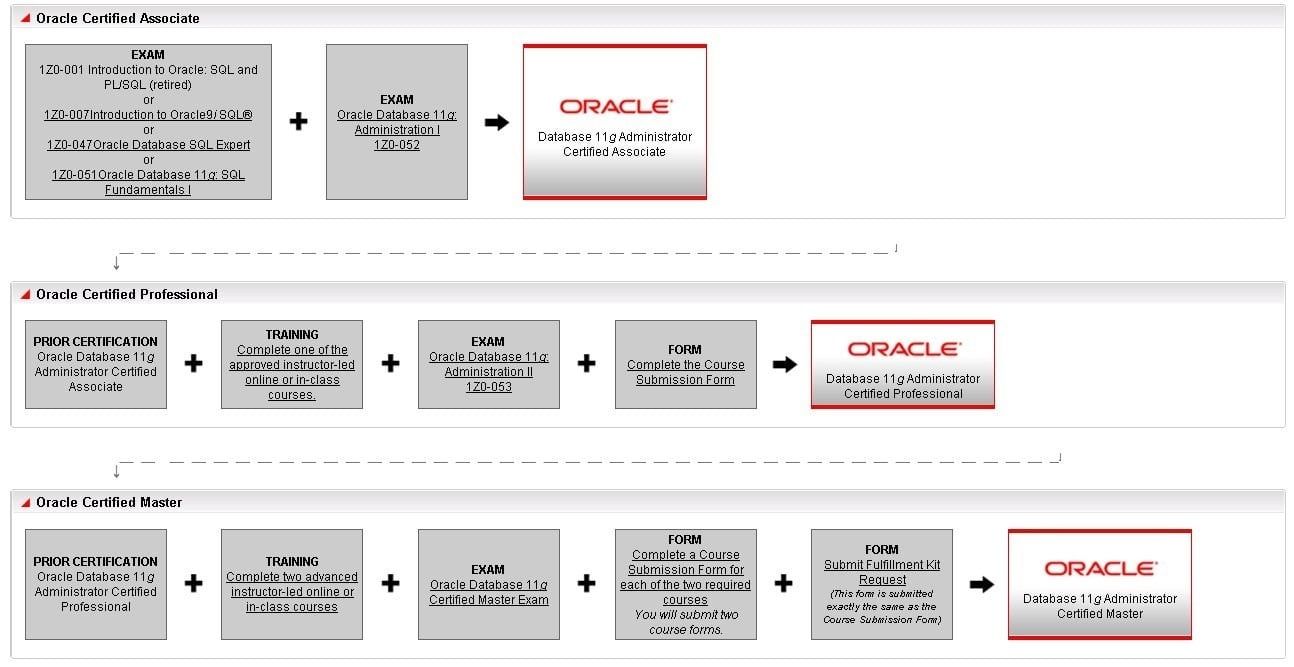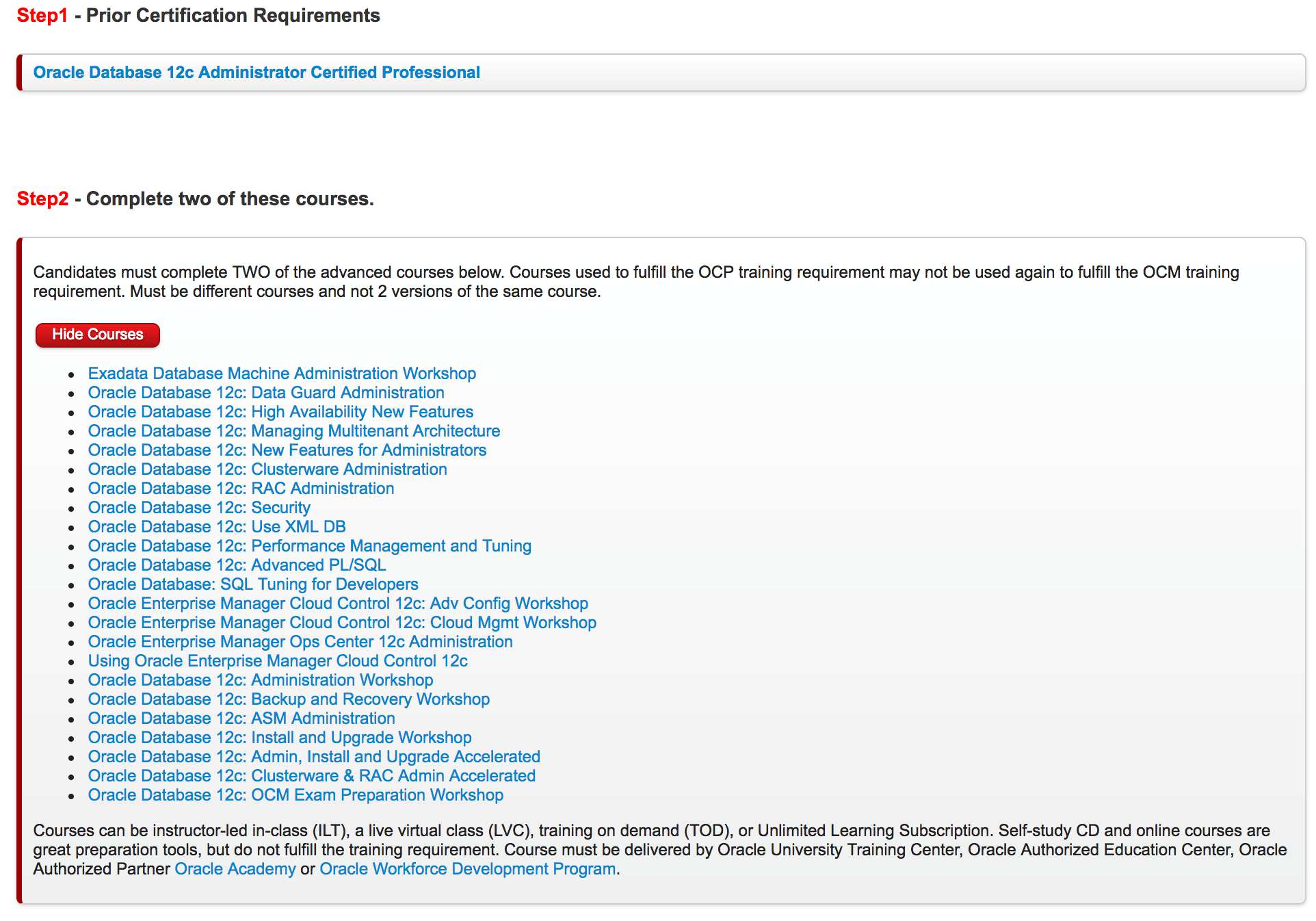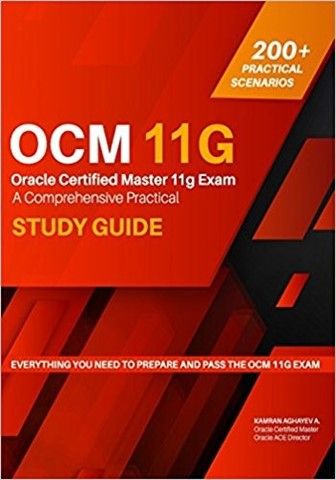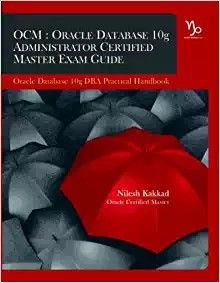Introduction
In 2013 I began my preparation for becoming Oracle Certified Master (OCM) 11g. I was already OCP (Oracle Certified Professional) 11g and OCP 12c, so to get to the next level, I made myself a schedule of reading and practice. The OCM exam is no joke—it takes a lot of knowledge, as well as speed in working to solve problems, to pass it. Later in this article I’ll share my study and practice schedule, which you can use to prepare for the exam yourself.
But first, some background. There are three levels of Oracle Database Certifications (for any version 11g or 12c):
- Associate (OCA)
- Professional (OCP)
- Master (OCM)
The Professional level requires Associate as a prerequisite, and Master requires Professional. So your certification quest starts at the Associate level. You have to pass two exams in order to achieve it. Next, you have to get your professional certification, which requires you to pass an exam and also take an Oracle University course. Once you are an OCP you can start your journey to become an OCM.
For OCM, you have to take two courses in Oracle University, and then you have to pass one more exam. This exam is different from the ones for the first two levels of certification, because it does not consist of multiple-choice questions and also it’s not online like the exams for OCA and OCP. To find out where to take it, you need to look at the Oracle Certified Master Exam Worldwide Schedule. There are only few countries where you can take this exam.
This exam is for real DBAs! It is 100% practice, rather than answering questions.
Basically you have to be prepared for anything and you have to do everything as fast as you can, because you have a limited time for each problem.

Above is the path to OCM for 11g. If you want to start directly toward certification in the 12c version, the path you follow is as follows:


Some months after I passed the OCM 11g exam, the OCM 12c exam was released, so I decided to take it as well. When I was preparing my OCM 12c I created the following schedule, which you can use, too, for your own preparation.
I focused my preparation in two main areas: Knowledge and Speed.
Hours to develop knowledge
The hours I allotted to increasing my knowledge I spent reading everything I could about that topic, blogs, metalink notes, forums, books, videos, etc. And inside that time I also practiced every topic on a virtual machine, at least twice. For example if the topic was “install database software”, I read everything about that topic and then I installed the software at least two times. With these hours I also was reading every single option of every single command J Yes! It was fun. I also tried to memorize as much syntax as I could. Once I knew how to do everything related to a topic and I got considerable knowledge about the syntax and concepts I moved to the hours for get faster.
Hours to increase speed: During these hours, I didn’t have to read more because I already knew how to do the things I was focusing on. This was time I set aside to practice and practice and practice and yes, practice. I tried to get as fast as I could.
So here is the schedule I used:
|
Topic |
Time (hrs) to read and practice (Knowledge) |
Time (hrs) to improve speed (Time) |
|
General Database and Network Administration |
40 |
14 |
|
Create and manage pluggable databases |
16 |
4 |
|
Administer users, roles, and privileges |
4 |
2 |
|
Configure the network environment to allow connections to multiple databases |
4 |
2 |
|
Administer database configuration files |
8 |
2 |
|
Configure shared server |
4 |
2 |
|
Manage network file directories |
4 |
2 |
|
|
|
|
|
Manage Database Availability |
60 |
18 |
|
Install the EM Cloud Control agent |
24 |
8 |
|
Configure recovery catalog |
8 |
2 |
|
Configure RMAN |
8 |
2 |
|
Perform a full database backup |
4 |
2 |
|
Configure and monitor Flashback Database |
16 |
4 |
|
|
|
|
|
Data Warehouse Management |
56 |
23 |
|
Manage database links |
4 |
2 |
|
Manage a fast refreshable materialized view |
16 |
4 |
|
Create a plug-in tablespace by using the transportable tablespace feature |
16 |
4 |
|
Optimize star queries |
4 |
2 |
|
Configure parallel execution |
4 |
2 |
|
Apply a patch |
4 |
2 |
|
Configure Automatic Data Optimization, In-Row Archiving, and Temporal Validity |
8 |
4 |
|
Manage external tables |
8 |
3 |
|
|
|
|
|
Data Management |
60 |
16 |
|
Manage additional buffer cache |
4 |
2 |
|
Optimize space usage for the LOB data |
8 |
2 |
|
Manage an encrypted tablespace |
8 |
2 |
|
Manage schema data |
8 |
2 |
|
Manage partitioned tables |
8 |
2 |
|
Set up fine-grained auditing |
8 |
2 |
|
Configure the database to retrieve all previous versions of the table rows |
16 |
4 |
|
|
|
|
|
Performance Management |
68 |
27 |
|
Configure the Resource Manager |
16 |
12 |
|
Tune SQL statements |
8 |
3 |
|
Use real application testing |
16 |
3 |
|
Manage SQL Plan baselines |
8 |
3 |
|
Capture performance statistics |
8 |
3 |
|
Tune an instance – Configure and manage result cache, Control CPU use for Oracle Instances, Configure and manage "In Memory" features |
12 |
3 |
|
Manage extended statistics |
8 |
2 |
|
Create and manage partitioned indexes |
8 |
2 |
|
|
|
|
|
Data Guard |
56 |
26 |
|
Administer a Data Guard environment |
12 |
4 |
|
Create a physical standby database |
16 |
8 |
|
Configure a standby database for testing |
4 |
4 |
|
Configure a standby database to apply redo |
8 |
2 |
|
Configure a standby database to use for reporting |
4 |
2 |
|
Configure fast start failover |
4 |
2 |
|
Manage extended statistics |
4 |
2 |
|
Manage DDL in a Data Guard environment |
4 |
2 |
|
|
|
|
|
Grid Infrastructure |
80 |
34 |
|
Install Oracle Grid Infrastructure |
16 |
8 |
|
Create ASM Disk Groups |
8 |
4 |
|
Create and manage ASM instances |
8 |
4 |
|
Configure ASM Cloud File System (ACFS) |
8 |
4 |
|
Administer Oracle Clusterware |
16 |
6 |
|
Manage Flex Clusters and Flex ASM |
12 |
4 |
|
Manage Flex Clusters and Flex ASM |
12 |
4 |
|
|
|
|
|
Real Application Cluster Database |
40 |
9 |
|
Install Oracle Database software |
8 |
3 |
|
Create a Real Application Clusters (RAC) database |
8 |
2 |
|
Configure Database Services |
16 |
2 |
|
Administer Oracle RAC databases on one or more cluster nodes |
8 |
2 |
Using this schedule, I tried to practice four hours every day after my job, and I dedicated my weekends to this effort completely (16 hours) so I was able to get prepared in about three months. Depending on the time you have to commit to your own effort, your ‘mileage may vary’.
In addition to my schedule, you can also use the following books for your preparation. One of them is from Kamran Agayev, an 11g OCM and a good friend.

Oracle Certified Master 11g Study Guide by Kamran Aghayev.

OCM: Oracle Database 10g Administrator Certified Master Exam Guide by Nilesh Kakkad
Once you have passed your OCM exam you will receive a card like this:

Conclusion
Getting prepared for the OCM is not easy, it takes time. And without good preparation, you likely will not pass the exam. This exam is no joke, it is serious and you should be well prepared in every area before scheduling it. In this article I’ve provided a preparation plan you can follow to get to take it and become an Oracle Certified Master. Best of luck!
Start the discussion at forums.toadworld.com